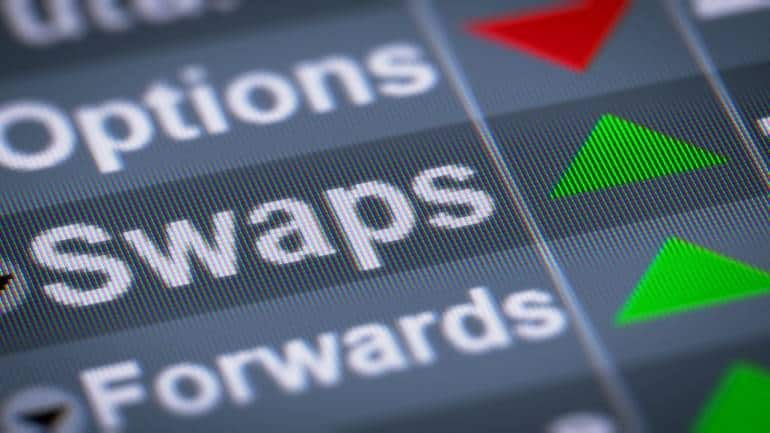Here's how you can trade Options during the corporate results season
It is difficult to predict if a stock will go up or down post the event like result. However, one thing that can be traded is the expectation of movement and options trading is favourable during onslaught of volatility said Shubham Agarwal .
SHUBHAM AGARWAL | 15-Jan-22
Reading Time: 3 minutes

undefinedEvery quarter we are presented with opportunities to trade due to the announcement of corporate results . These results create movements in the stock prices. As we all know more movement means more opportunities to trade.
How do Options come into the picture?
There are two roles - options can play in trading result-led movements. One is to estimate the move that result may create, and the other is of trading that estimate. Let us look at each one of them one by one.
1. Option as an Estimator:
As we all know option premiums are influenced more by the sellers of the options. Just like Insurance premiums are dictated by the Insurance Sellers (Insurance companies). Now, consider result season as the time of infection season like monsoons (where there is more risk of disease). If there is more risk, the insurance sellers or in our case option sellers will command more premium.
Considering that Option sellers are trying to create an estimate of the risk out of the resulting movement, it is safe to say that the same estimate can be used by us to find out how the high-risk takers are expecting the stock to behave post result.
So, a rather simple technique can now tell us the expected movement post result. The formula for this is very simple. Just add the Call Premium and Put Premium of the strike close to the current market price. The added sum that we get can be added and subtracted from the Strike Price and what we get is the post result expected or estimated range.
Example: With 2 Days to result in announcement Stock X trades at 100 with
100 Call @ 3
100 Put @ 4
Total Premium of 100 Call + 100 Put = 7
Post Result Expected Range = 100 – 7 to 100 +7 = 93 to 107
2. Trading Results with Options:
Unless one has very specific insight into the results, it is difficult to define the direction post the event of the result. In fact, any event for that matter comes with uncertainty. It is difficult to predict if a stock will go up or down post the event-like result.
However, one thing that can be traded is the expectation of movement. Now, the estimate that we got out of the 1st point can be used as an input here.
If one believes the stock can go beyond the range of 93-107 then one can buy both Call and Put. If our expectation is correct and the stock does go above 107 or below 93, one will get money out of the trade due to extra movement.
On the other hand, there are traders who may feel the Estimated Range of 93-107 is too big and the movement may not be so big. In such a case, there are options traders who sell both Call and Put options with a strike that is close to the current market price of the stock. The same can be bought back right after the result to exit the trade.
However, this trade is a very risk because the movement after the result is very fast. Also, if the result is announced before market hours or after market hours, the gap opening may not let us buy back the sold option (when our expectation of movement is wrong, and the movement is bigger).
For such cases, many traders also Buy a Higher Call and a Lower Put compared to the Call and Put we sold. This helps in restricting the loss if we go wrong. On the other hand, the premium paid on buying the additional Call and Put will lower the profit, but it is safer this way.
Learn and read more about short term from Quantsapp classroom which has been curated for understanding of option strategy from scratch, to enable option traders grasp the concepts practically and apply them in a data-driven trading approach.
Recent Articles

Knowing when not to adjust trades: Shubham Agarwal
27-Dec-25

How to make profit when markets go sideways: Shubham Agarwal
20-Dec-25

Beyond Panic: Take control when your derivatives trade turns red, says Shubham Agarwal!
13-Dec-25

Evolve Your Trade: The missing step in most trading systems: Shubham Agarwal
06-Dec-25

Best trending option trading strategies: Shubham Agarwal
29-Nov-25

3 best ways to hedge using Options: Shubham Agarwal!
22-Nov-25

When in doubt to write, do Iron Fly: Shubham Agarwal!
15-Nov-25

Identify potential turning points with advance-decline: Shubham Agarwal
08-Nov-25

SHUBHAM AGARWAL is a CEO & Head of Research at Quantsapp Pvt. Ltd. He has been into many major kinds of market research and has been a programmer himself in Tens of programming languages. Earlier to the current position, Shubham has served for Motilal Oswal as Head of Quantitative, Technical & Derivatives Research and as a Technical Analyst at JM Financial.
Recent Articles

Knowing when not to adjust trades: Shubham Agarwal
27-Dec-25 10:58:00

How to make profit when markets go sideways: Shubham Agarwal
20-Dec-25 12:14:00

Beyond Panic: Take control when your derivatives trade turns red, says Shubham Agarwal!
13-Dec-25 09:12:00

Evolve Your Trade: The missing step in most trading systems: Shubham Agarwal
06-Dec-25 20:43:00

Best trending option trading strategies: Shubham Agarwal
29-Nov-25 09:32:00

3 best ways to hedge using Options: Shubham Agarwal!
22-Nov-25 09:11:00

When in doubt to write, do Iron Fly: Shubham Agarwal!
15-Nov-25 10:48:00











